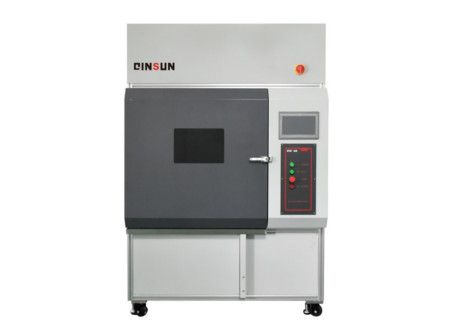
NewsInformation Center
What is the accelerated aging test process?
2023/09/22
The accelerated aging test process is a method used to simulate the effects of long-term exposure on materials or products within a shorter period of time. By subjecting samples to harsher conditions, such as increased temperature, humidity, or radiation, the goal is to accelerate the aging process and assess the durability, performance, and lifespan of the materials or products. Let's discuss the steps involved in the accelerated aging test process:
1. Test Objective and Planning:
- Clearly define the purpose and objectives of the accelerated aging test. Determine the specific parameters to be evaluated, such as mechanical properties, appearance, functionality, or chemical stability.
- Plan the test duration, considering the intended accelerated aging rate and the desired level of confidence in the test results.
- Define the test conditions that will simulate the expected real-world conditions, such as temperature, humidity, light exposure, or chemical exposure.
2. Sample Preparation:
- Select representative samples that accurately reflect the materials or products of interest. Consider factors such as composition, dimensions, surface finish, and any specific features or vulnerabilities.
- If necessary, condition the samples to a standardized environment to ensure consistency and eliminate initial variations.
- Ensure proper documentation and labeling of samples for easy identification throughout the test.
3. Test Setup:
- Set up the testing apparatus or equipment according to the defined test conditions. This may involve using environmental chambers, ovens, exposure racks, or specialized aging chambers depending on the specific requirements of the test.
- Install the samples securely in the test setup, ensuring proper exposure to simulate natural aging conditions.
4. Monitoring and Control:
- Continuously monitor and record the test parameters, including temperature, humidity, exposure time, or any other relevant factors. This ensures that the defined conditions are maintained throughout the test duration. Automated data acquisition systems can be used for accurate and reliable monitoring.
- Regularly inspect and document any visible changes or degradation occurring on the samples, such as color fading, cracking, dimensional changes, or other observable effects.
5. Intermediate Testing:
- At specific time intervals, remove representative samples from the test setup for intermediate evaluation and analysis. This allows for the assessment of the material's or product's performance and properties during the aging process.
- Perform relevant tests or measurements to evaluate parameters of interest. This may include mechanical tests, chemical analysis, microscopy, spectroscopy, or any other appropriate testing methods.
- Compare the intermediate test results with the initial baseline data and assess the rate and extent of aging.
6. Completion and Final Analysis:
- Conclude the accelerated aging test at the defined duration or when the desired aging effects have been achieved.
- Perform a comprehensive analysis of the samples, comparing their properties and performance with the initial baseline data.
- Evaluate and interpret the test results, considering factors such as material degradation, functional changes, stability, durability, or any other relevant criteria.
- Identify any failure modes, weaknesses, or limitations observed during the accelerated aging test, and formulate recommendations or improvements accordingly.
7. Reporting and Documentation:
- Prepare a detailed report summarizing the test objectives, procedures, parameters, results, and conclusions.
- Include all relevant data, observations, graphs, images, and analysis in the report.
- Ensure the report clearly communicates the implications and significance of the accelerated aging test results in relation to the real-world applications or intended use of the materials or products.
It is important to note that while accelerated aging tests can provide valuable insights into the long-term behavior of materials or products, they are not a guarantee of the exact real-world performance. The test results should be considered as a preliminary indication, and further field testing or validation may be required for a comprehensive evaluation. Additionally, the specific procedures and test parameters for accelerated aging tests may vary depending on the materials, products, or industry standards being followed.
Previous: What is a xenon lamp aging test chamber and how does it work?
N e x t : What is salt spray testing and what equipment is required?




